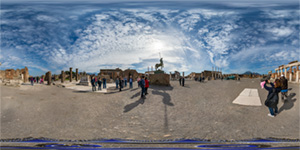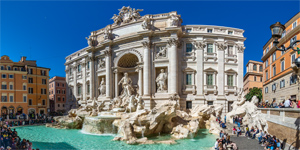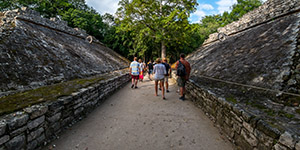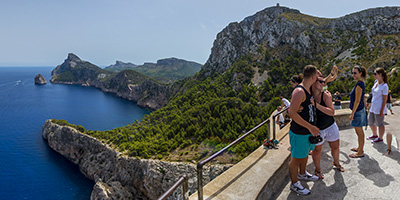
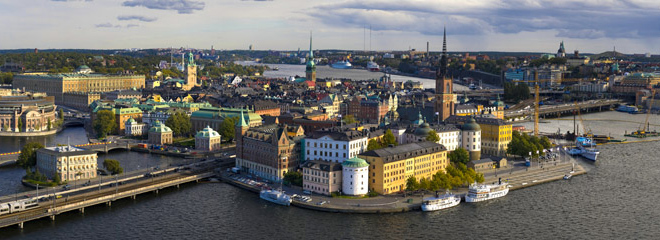
Editor's Pick Panoramas
The Civil Forum is the core of daily life of the city and is the focal point of all the main public buildings for city administration and justice, business management, and trade activities such as markets, as well as the main places of citizen worship. The square of the Forum originally looked like a simple open area with an overall regular shape, made of clay and its western side opened on to the Sanctuary of Apollo, whereas the eastern side had a row of shops.
The Roman Forum, also known by its Latin name Forum Romanum, is a rectangular forum (plaza) surrounded by the ruins of several important ancient government buildings at the center of the city of Rome. Citizens of the ancient city referred to this space, originally a marketplace, as the Forum Magnum, or simply the Forum. For centuries the Forum was the center of day-to-day life in Rome: the site of triumphal processions and elections; the venue for public speeches, criminal trials, and gladiatorial matches; and the nucleus of commercial affairs. Here statues and monuments commemorated the city's great men.
The Palazzo Colonna is a palatial block of buildings in central Rome, Italy, at the base of the Quirinal Hill, and adjacent to the church of Santi Apostoli. It has belonged to the prominent Colonna family for over twenty generations. The first part of the palace dates from the 13th century, and tradition holds that the building hosted Dante during his visit to Rome. The first documentary mention notes that the property hosted Cardinals Giovanni and Giacomo Colonna in the 13th century. It was also home to Cardinal Oddone Colonna before he ascended to the papacy as Pope Martin V in 1417.
The Trevi Fountain (Italian: Fontana di Trevi) is a fountain in the Trevi district in Rome, Italy, designed by Italian architect Nicola Salvi and completed by Giuseppe Pannini and several others. Standing 26.3 metres (86 ft) high and 49.15 metres (161.3 ft) wide, it is the largest Baroque fountain in the city and one of the most famous fountains in the world. The fountain has appeared in several notable films, including Roman Holiday, Federico Fellini's La Dolce Vita, the eponymous Three Coins in the Fountain, The Lizzie McGuire Movie, and Sabrina Goes to Rome.
Room of Heliodorus or Stanza di Eliodoro is one the spectacular Raphael rooms in Vatican (Rome) painted between 1511 & 1514. Together with Michelangelo's ceiling frescoes in the Sistine Chapel, Raphael's frescoes are the grand fresco sequences that mark the High Renaissance in Rome. The four paintings are: The Expulsion of Heliodorus from the Temple, The Mass at Bolsena, The Meeting of Pope Leo I and Attila, and The Deliverance of Saint Peter from Prison. In the first two of these frescoes, Raphael flatteringly includes his patron, Pope Julius II, as participant or observer; the third, painted after Julius's death, includes a portrait of his successor, Leo X.
Gallery of the Candelabra in the Vatican Museums, Originally an open loggia built in 1761, the loggia was walled up at the end of the 18th century. The ceiling was painted in 1883-1887. The gallery contains Roman copies of Hellenistic originals (3rd-2nd century B.C.) and some great 2nd century candelabra, from Otricoli.
This is one of two ball courts located in the Coba archeological site that is outside the so called _Coba Group_ - a series of structures close to the entrance that include the Iglesia (the Church) and another ball court - Ancient Mayan city of Coba, Mexico.
Cap de Formentor is a spectacular place,located on the northernmost point of the Balaeric Island Majorca in Spain. Its highest point, Fumart, is 384m above sea level. The headland has quite a few lookout points with spectacular views. The most well-known is Mirador del Mal Pas, also named Mirador d'es Colomer after the small island Colomer. The panorama from Majorca's Finisterre illuminates Menorca in the east, Cala Fiquera in the west, and Alcudia with its sandy beach in the south. But the view of the cliffs below causes even the most fearless to feel weak in the knees. The sea roars 300m below and if that isn't enough.
|
|
|
|
|
|
